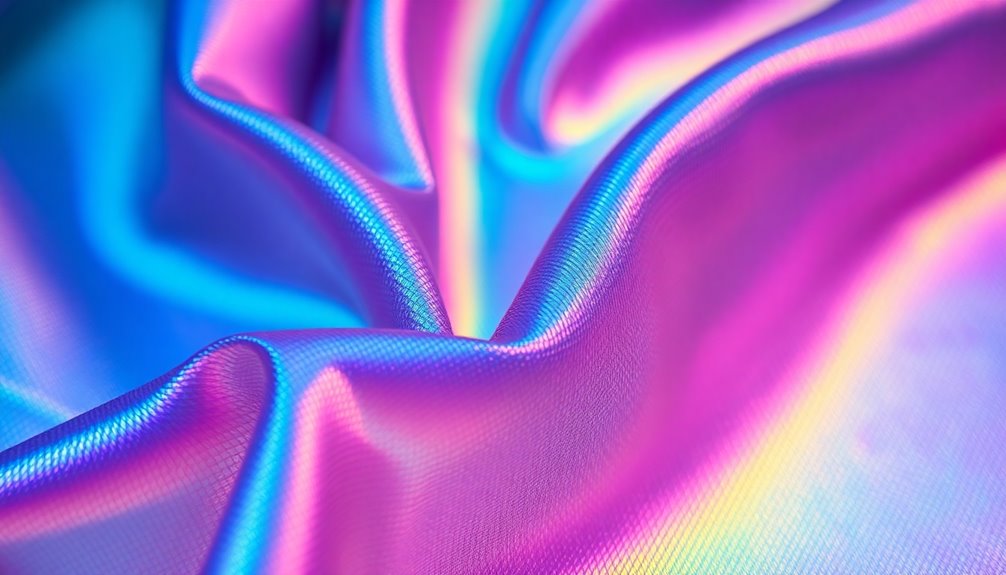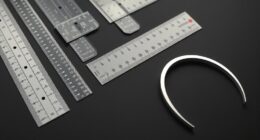The fabric that stretches is often called stretch fabric, primarily made from materials like spandex or Lycra. These materials let it stretch considerably and then return to its original shape, making it perfect for activewear and form-fitting clothing. Whether you're into sports or just want comfortable attire, you'll find stretch fabric versatile. If you're curious about the different types and properties, there's much more to discover beyond this brief overview.
Key Takeaways
- Stretch fabrics include elastane (spandex), which provides exceptional elasticity and can stretch up to 500% of its original length.
- Types of stretch fabrics are categorized as 1-way, 2-way, and 4-way stretch, indicating the direction(s) they can stretch.
- Common applications for stretch fabrics are in sportswear, activewear, and form-fitting garments due to their comfort and flexibility.
- Popular stretch fabric blends include nylon spandex for durability and cotton spandex for breathability.
- Knitted fabrics, such as jersey and ponte, are preferred for their superior elasticity compared to woven fabrics.
Understanding Stretch Fabric
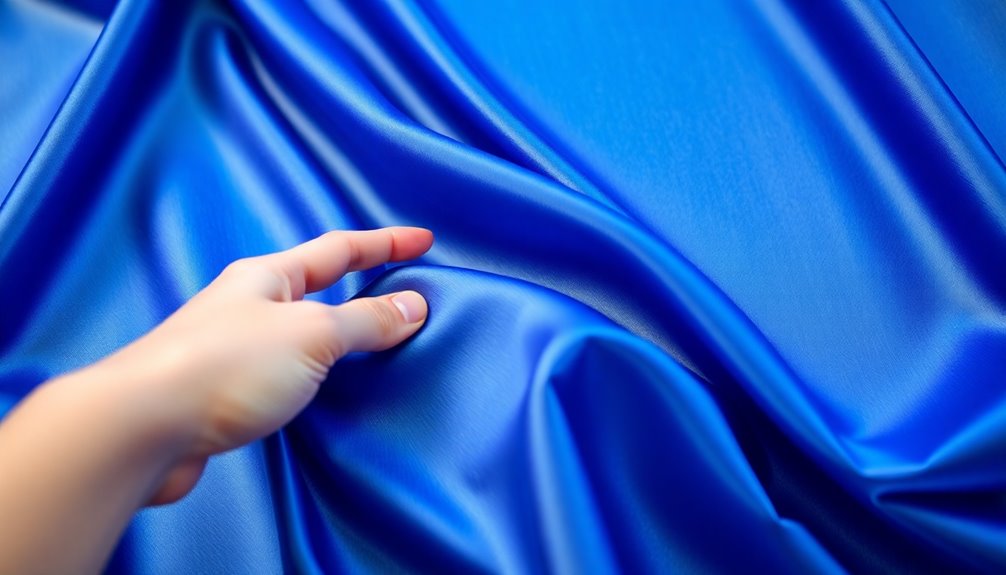
Stretch fabric is an incredible innovation in textile technology that combines flexibility and comfort.
It's a textile that can extend in length and return to its original size, making it perfect for sportswear, swimwear, and form-fitting garments. You'll find that stretch fabrics are often made with elastic materials like spandex, which can stretch up to 500% of their original length. This exceptional stretch capacity allows for freedom of movement while maintaining shape. Stretch fabrics can be categorized as two-way or four-way, depending on how they stretch. Stretch spandex fabric is known for its durability, ensuring it withstands frequent use without losing elasticity.
Whether you're wearing comfortable trousers or performance gear, these fabrics adapt to your body shape, providing comfort and breathability. You'll appreciate their versatility in both casual and specialized clothing.
Types of Stretch Fabrics

When exploring the various types of stretch fabrics, you'll find that their unique properties can greatly enhance comfort and performance.
You can choose from 1-way stretch fabrics that stretch in one direction, or opt for 2-way and 4-way stretch fabrics that provide more flexibility.
Knit fabrics, like jersey or ponte, offer comfort and structure, while fabrics like stretch lace and tulle add texture for specific uses.
Material composition matters too; nylon spandex is durable for athletic wear, while cotton spandex provides breathability for casual outfits.
Polyester spandex is wrinkle-resistant, and rayon spandex is lightweight for dresses. 4-way stretch fabrics are particularly ideal for activewear due to their ability to stretch in both directions.
Lycra can stretch significantly, making it perfect for swimwear.
Each type caters to different needs in your wardrobe.
Properties of Stretch Fabrics
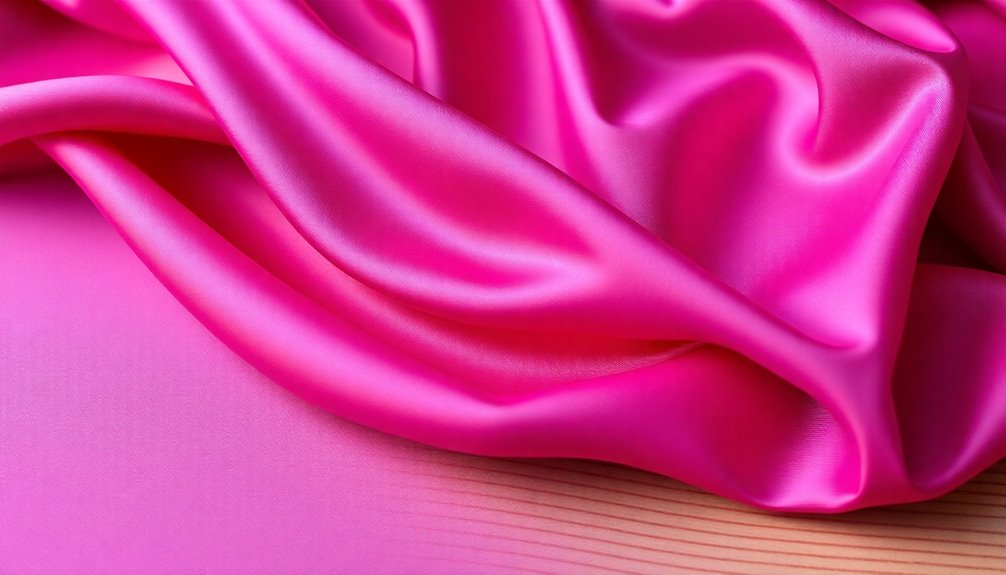
The unique properties of stretch fabrics make them essential in modern clothing design.
You'll appreciate how elastane, or spandex, provides incredible elasticity, allowing the fabric to stretch up to 500% of its original length without breaking. This remarkable stretch capacity pairs well with excellent recovery ability, ensuring garments maintain their shape after wear. Additionally, many stretch fabrics are often derived from synthetic materials that contribute to their elasticity and durability.
Many stretch fabrics feature bi-directional stretch, offering flexibility in both horizontal and vertical directions. You'll also notice their wrinkle resistance and breathability, especially in blends with natural fibers like cotton or wool.
The yarn structure, whether knit or woven, contributes considerably to these properties, enhancing overall performance while keeping comfort in mind.
Applications of Stretch Fabrics
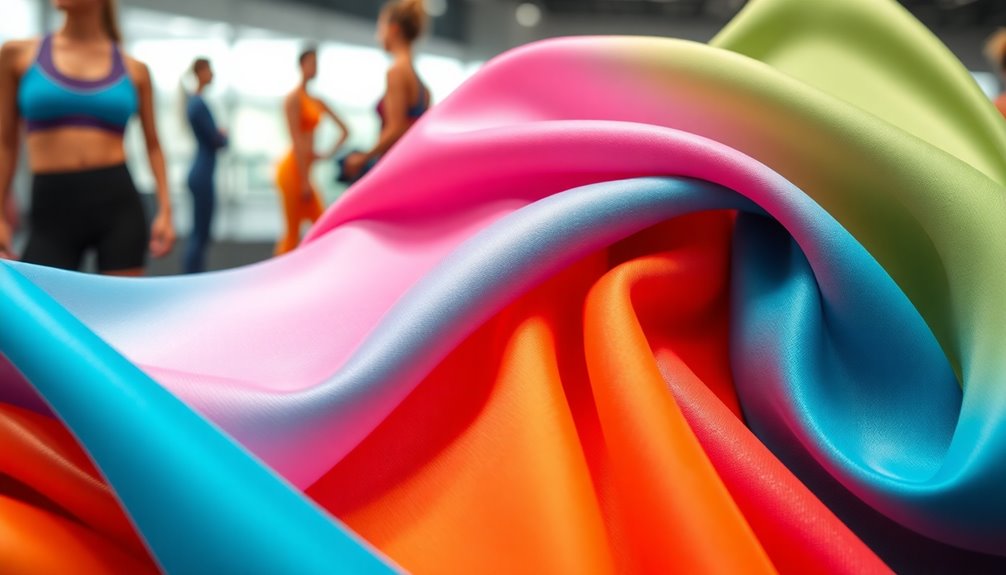
With their remarkable properties, stretch fabrics find a wide array of applications across various industries.
In fashion, they're perfect for creating comfortable sportswear and figure-flattering designs that enhance your look while allowing freedom of movement. The unique ability to return to original shape after extension has revolutionized material applications in the fashion industry.
In healthcare, these fabrics are crucial for medical garments like compression stockings, providing support and comfort tailored to individual needs.
Stretch fabrics also shine in interior design, improving acoustics and creating seamless decorative installations.
Beyond that, they're significant in sportswear, home textiles, and innovative construction materials.
Whether you're in search of flexibility for active pursuits or stylish comfort in your wardrobe, stretch fabrics adapt to meet your needs while enhancing performance and aesthetics across the board.
Manufacturing Stretch Fabrics
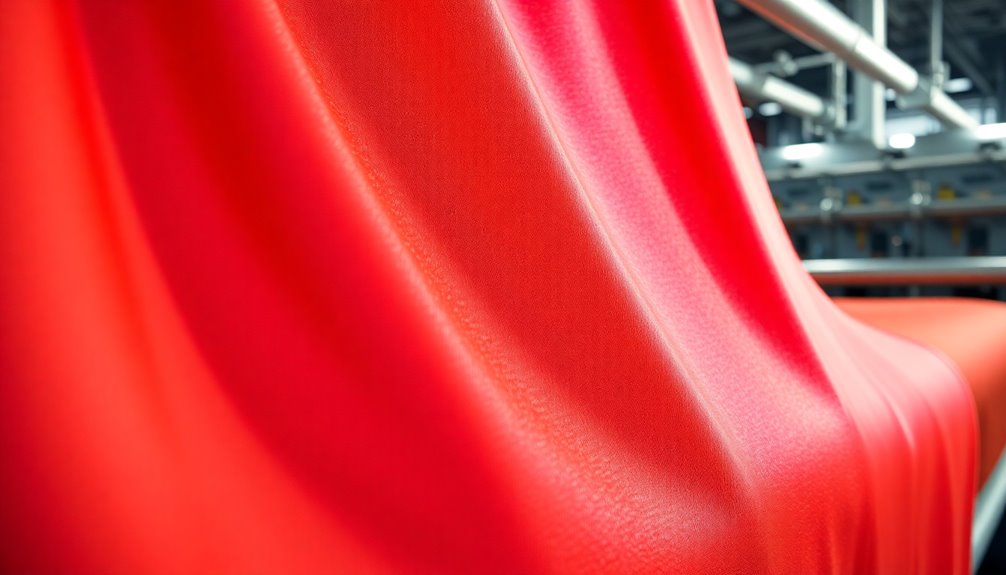
As manufacturers immerse themselves in the process of creating stretch fabrics, they often choose between knitting and weaving, with knitting generally being the preferred method due to its superior elasticity. They typically select synthetic fibers like polyester, nylon, and elastane for their durability and stretch properties. During production, fibers undergo cleaning, carding, and spinning to create smooth, consistent yarns. Knitting machines, particularly circular ones, are used to produce fabrics that can stretch both horizontally and vertically. Elastane is usually added to enhance the stretch, typically making up 5% to 20% of the fabric. Elastane fabric is known for its incredible elasticity and is widely utilized in consumer apparel for desired stretchiness. After knitting, finishing processes like washing and dyeing prepare the fabric for its various applications, ensuring high performance and comfort.
Sewing With Stretch Fabrics
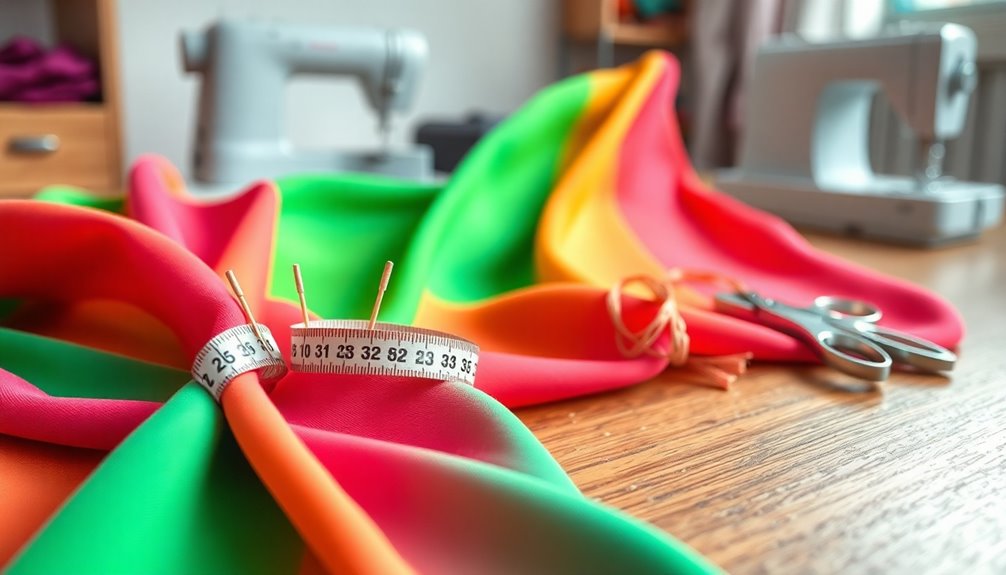
Sewing stretch fabrics can be a rewarding experience, especially when you master the right techniques. Start by selecting the appropriate stitch; a zigzag stitch offers flexibility, while a serger creates secure seams. Use ballpoint or stretch needles to prevent damage and minimize skipped stitches. Additionally, using a Coverstitch machine will provide a professional-looking finish for your hems. Adjust your stitch length and width based on the fabric's weight, and avoid stretching the fabric while sewing to maintain its shape.
For hems, consider using a twin needle for a professional finish. Support your fabric adequately to avoid sagging, and practice on scraps to perfect your technique. Finally, pre-wash your fabric to prevent future shrinkage. With these tips, you'll create beautiful, durable projects using stretch fabrics.
Frequently Asked Questions
Can Stretch Fabrics Be Recycled or Are They Non-Biodegradable?
Stretch fabrics can indeed present recycling challenges due to their composition, particularly elastane, which complicates conventional methods.
You'll find that blended fibers, like cotton and polyester, are difficult to separate, making recycling tough.
However, new technologies are emerging, such as microwave-assisted breakdown and solvent-based separation, which aim to improve recycling processes.
While these fabrics aren't biodegradable, ongoing innovations are focusing on creating more sustainable solutions to address these environmental concerns.
How Do I Care for Stretch Fabric Garments?
Imagine your favorite pair of yoga pants, stretching effortlessly as you move.
To care for stretch fabric garments, wash them in cold water with mild detergents. Use a gentle cycle and mesh laundry bags to avoid snagging.
Air dry them flat, never wring or twist. If you need to iron, keep the heat low and use a cloth barrier.
Store them in a cool, shaded spot to maintain elasticity and prevent fading.
Are There Any Stretch Fabrics That Are Environmentally Friendly?
Yes, there are several environmentally friendly stretch fabrics you can choose from.
Look for recycled elastane options like creora® regen and ROICA™ EF, or explore biobased elastane made from renewable materials.
Recycled polyester offers good elasticity while being sustainable, and natural fibers like wool also provide inherent stretch.
Choosing these fabrics not only supports your comfort but also contributes to a more sustainable future by reducing waste and lowering your carbon footprint.
What Is the Lifespan of Stretch Fabrics?
Stretch fabrics can last forever if you treat them right!
Typically, their lifespan ranges from a few months to several years, depending on factors like material quality and care.
To extend their life, wash them gently in cold water, air dry, and avoid harsh chemicals.
Frequent use can wear them out faster, so be mindful of how often you're wearing your favorite stretchy garments.
Proper maintenance makes all the difference!
Can Stretch Fabrics Be Used for Upholstery?
Yes, you can definitely use stretch fabrics for upholstery! They offer great comfort and flexibility, allowing them to conform to various shapes.
These fabrics are durable and resistant to stains, mildew, and fading, making them perfect for both residential and commercial applications.
You'll find that stretch upholstery fabrics come in a variety of colors and patterns, giving you plenty of aesthetic options while ensuring easy maintenance and long-lasting performance.
Conclusion
To sum up, stretch fabrics are not just versatile but also incredibly popular in the fashion industry, making up about 30% of apparel sales globally. With their unique properties and various types, these fabrics offer comfort and style for countless applications. Whether you're sewing activewear or casual dresses, understanding how to work with stretch fabrics can elevate your projects. So, plunge in and explore the endless possibilities that these amazing materials have to offer!
